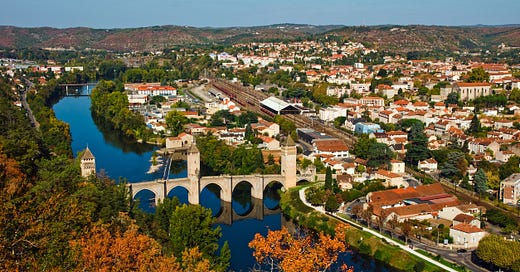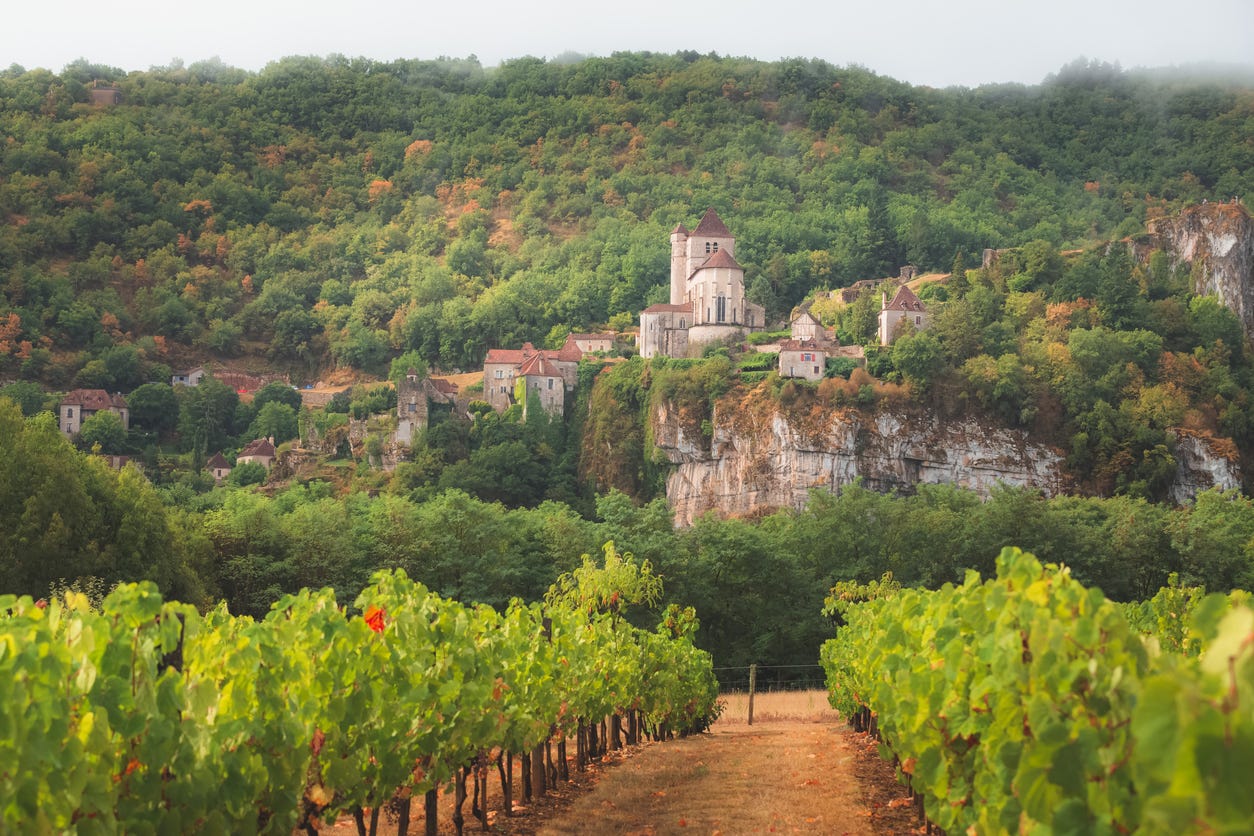This week we’ve continued our meanderings around south-west France, whiling away the days tasting wines from the Lot river valley. The main appellation in this part of the world is Vin de Cahors, named after the capital city of the Lot department. There have been vines here since the time of the Romans, and by the 12th century that proximity to a major waterway - the Lot is a tributary of the Garonne river which flows to Bordeaux and out into the Atlantic - meant Cahors wines reached northern Europe in large quantities and became a favourite tipple in many a royal court.
The famous Valentre bridge in Cahors, gateway to the Vins de Cahors wine region
The dominant grape in Cahors is what we know today as Malbec, although over the years the same variety has also been known, and is often still referred to locally as Auxerrois or Côt. Malbec’s international success is largely thanks to prescient French agricultural engineer, Michel Pouget, who managed to export the variety to Argentina in 1868 before the dreaded phylloxera louse decimated the region’s vineyards. Today, of course, Malbec is one of Argentina’s most popular red grapes and the full-bodied reds from Mendoza in the north-west have become one of the country’s best exports.
After the Second World War, local Lot growers got together to reactivate the local wine industry and focus on quality wines. Their efforts paid off - the area was awarded AOC status in 1971, and these days there are about 4,200 hectares of vines growing on both banks of the Lot, producing 160,000 hectolitres (over 21 million bottles) annually, about 30% of which gets exported.
Cahors wines have to contain a minimum of 70% Malbec, which is often blended with Merlot and Tannat which adds structure and a good dose of tannin. Winemakers round here respect tradition and wines tend to be made using long macerations to extract the maximum amount of colour and tannin. Fermentation generally takes place in stainless steel or concrete, followed by oak ageing for between 6 and 24 months.
The medieval hilltop village of Saint-Cirq-Lapopie in the Lot Valley, southwest France.
Wines are dark purple, almost black in colour, with a complex nose of dark fruit, spices, licorice and cedar. In the mouth they tend to be powerful and full-bodied, with well-integrated tannins, a long, lingering finish and great potential for laying down for 5-20 years before drinking (if you can wait that long!).
These big reds may not be your first choice for a light summer tipple, but they’re a great option for autumn and winter, especially when you pair them with hearty dishes like game, mushrooms or cassoulet, the signature stew of south-west France made with cannellini beans and readily available meat like Toulouse sausage or duck confit. Delicious!
À bientôt.
Matthew






Georges Vigouroux 'Le Grand Retour' Malbec 2020/21, Cahors £10.50 on mix six price in Majestic is a really fruity modern expression, with I think some Merlot to soften the Malbec.The title refers to “The great return” from Argentina back to the origins.
In medieval times the Cahorsins were known as infamous Christian money lenders and Dante in his Inferno placed them in the fourth rung of descent into hell.
Fortunately the wines have a much better reputation.